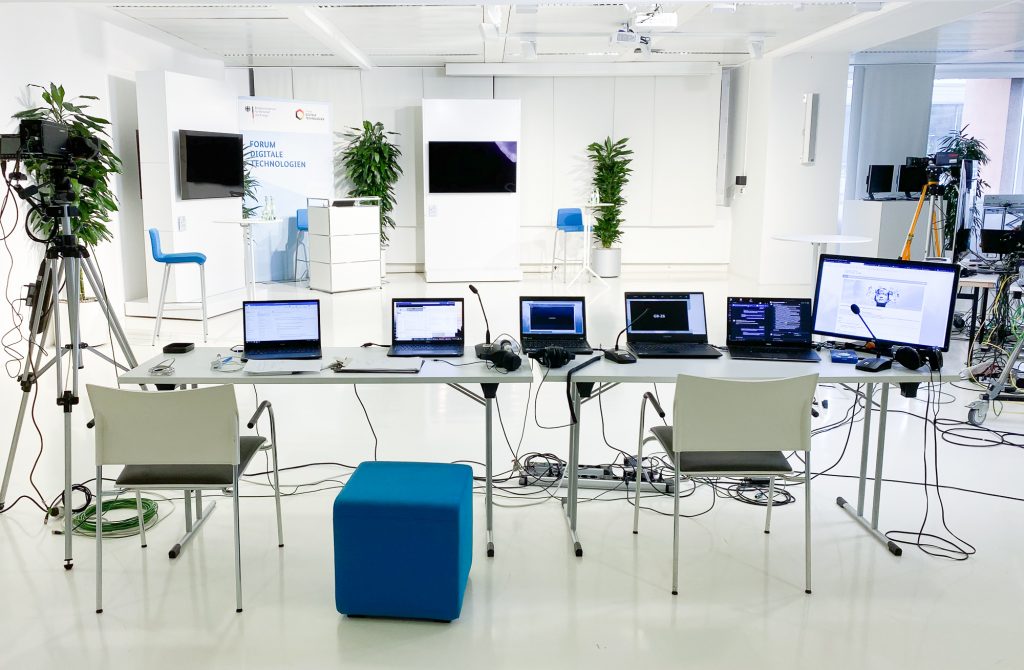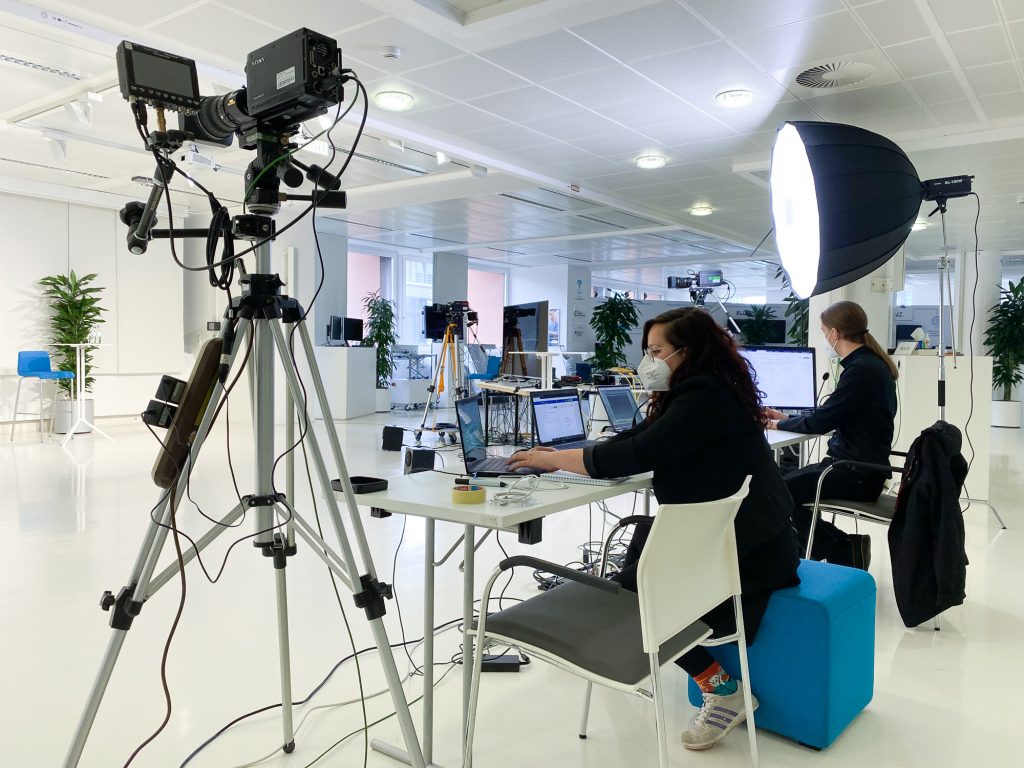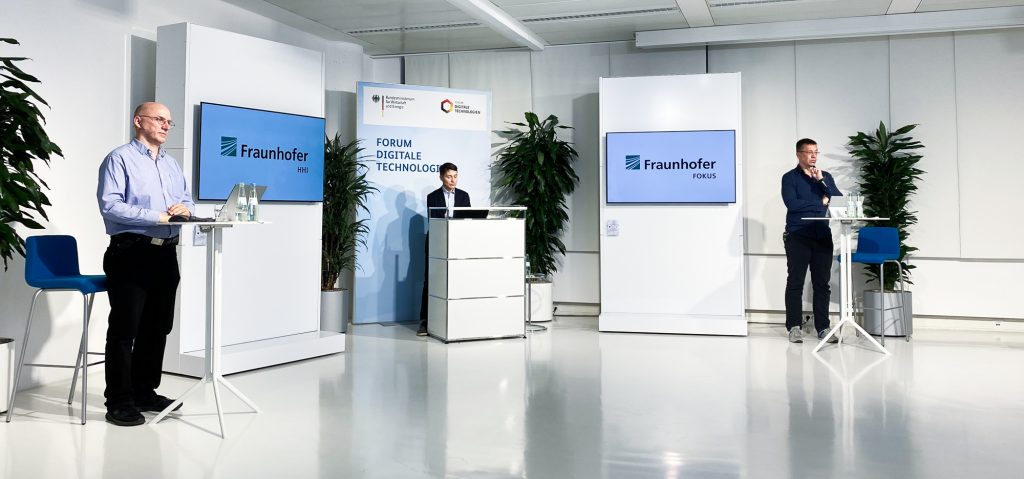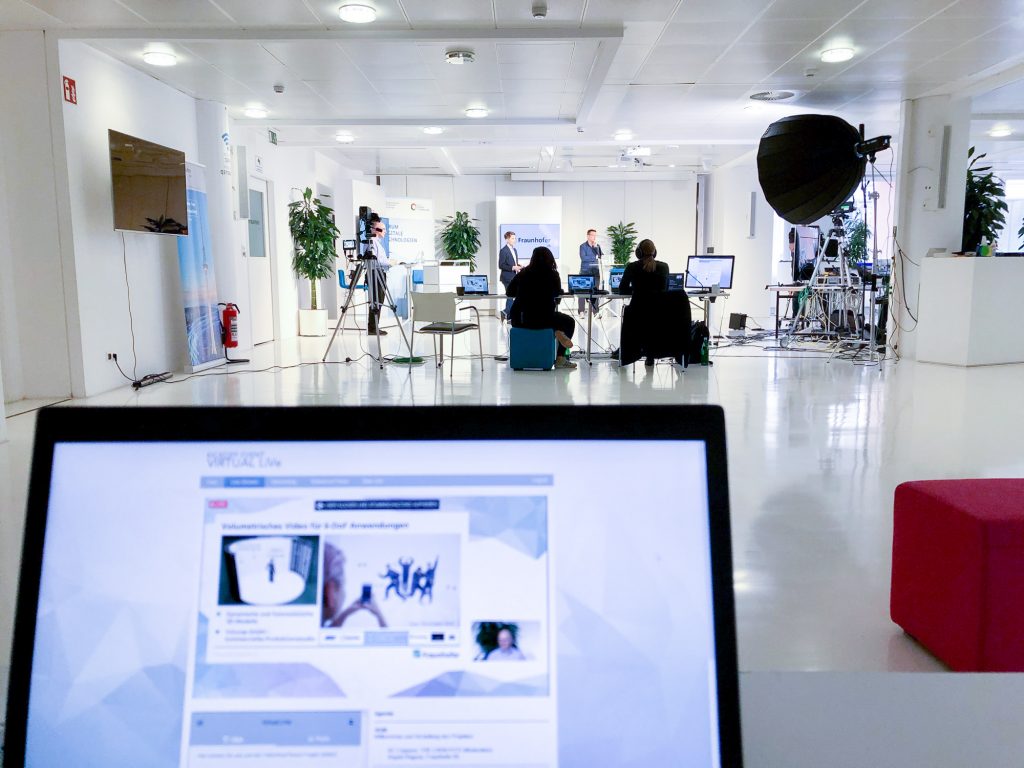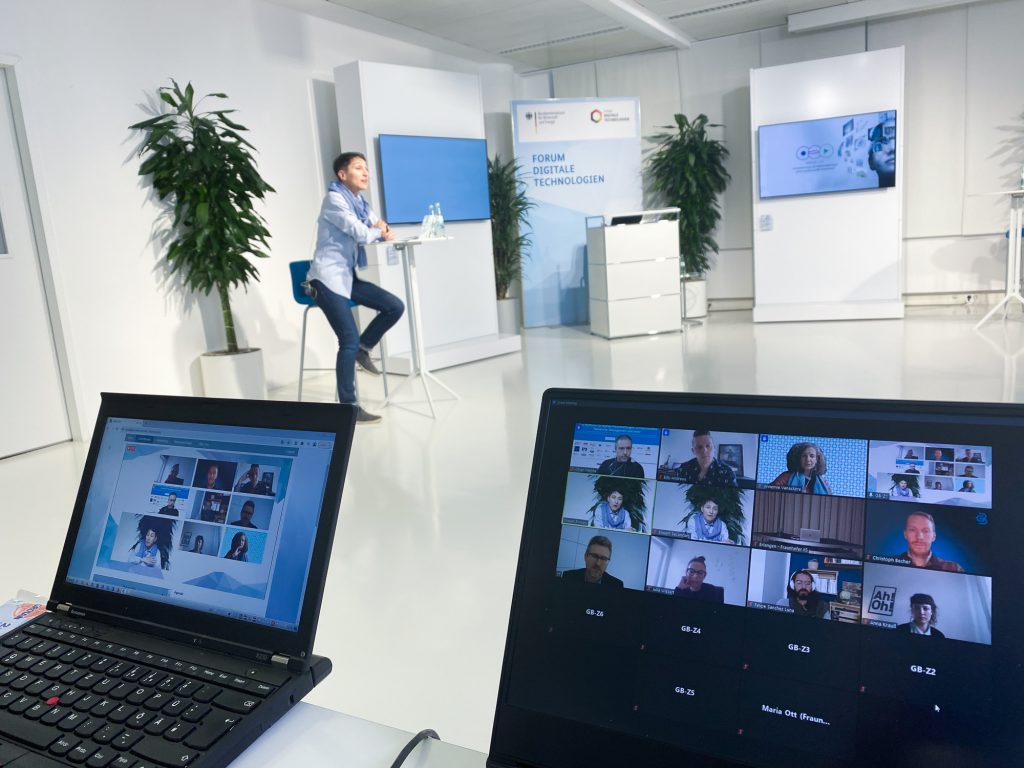On 26 May 2021, the kick-off event of the new project Virtual LiVe, launched in April by 3IT’s long-time partners Fraunhofer HHI and Fraunhofer IIS in collaboration with Fraunhofer FOKUS took place. It was hosted by the 3IT and was held in a hybrid format at the CINIQ-Center.
The event, moderated by AC Coppens from THE CATALYSTS, aimed at the elaboration of the needs in live events of the culture and events sectors. Due to the pandemic situation, most of the cultural, business and other events have been taking place online or in hybrid formats. In this context, the kick-off event served as a platform for various players from the different industries to come together, discuss challenges and exchange ideas on the topic of live events.
Virtual LiVe has originated and is financed by the KMU-akut program “Research for SMEs” by the Fraunhofer-Gesellschaft with the objective to foster the innovative strength of institutions and SMEs from the cultural and events sectors by providing high-end technology solutions and innovations. However, the project does not intend to overcome or replace physical live events. Rather, it aims at being a supplement and extension to live events by combining the virtual with the physical realm, as presented by Angela Raguse from Fraunhofer IIS and Business Area Digital Media during the introduction of the project.
According to the renowned keynote speakers (Kavaye Ozong, ARTE; Harmke Heezen, High Road Stories; Oliver Ihrens, Radar Media and Thomas Bedenk, Freelancer), different small and large businesses as well as cultural institutions suddenly faced similar problematics in terms of live events, due to COVID-19. This has led to an intersectoral surge in demand to combine Virtual Reality with real live events in hybrid formats.
Subsequently, the technological possibilities of Virtual LiVe were presented, focusing on the technological possibilities and their combination within the framework of the project. Siegfried Foessel from Fraunhofer IIS, Stephan Steglich from Fraunhofer FOKUS and Christian Weißig from Fraunhofer HHI talked about the spectrum of the respective solutions that can contribute to the development of a practicable tool box of technologies.
The following panel assembled various protagonists of the cultural, media and event industries: Billy Andrews (The Dark Tenor), Christoph Becher (GAHRENS + BATTERMANN), Felipe Sanchez Luna (kling klang klong), Stefan Trieb (mac), Anna Krauß and Annemie Vanackere (Hebbel am Ufer), Oliver Warnke (Iventic) and Julia Wissert (Schauspiel Dortmund).
All panel speakers expressed the difficulties and challenges they had been facing since the beginning of the situation due to COVID-19, as events, concerts and plays had been cancelled. None of the participants had comprehensive previous knowledge about the transfer of an analog event into the digital sphere. In particular, the implementation of new technologies into both cultural and business events in terms of the legal and administrative situation in Germany as well as logistics often presented an obstacle. What’s more, latency remained a predominant issue.
However, all speakers were united by a common interest in technological innovation, the implementation of Virtual and Mixed Reality as well as hybrid event formats. While according to some speakers, a virtual or digital event would never be able to replace a real event, the majority of the speakers acknowledged the innovative potential of immersion, even for speculative fiction and new ideas. Hybrid event formats and the combination of virtual and analog spaces, it was argued, could in turn promote the emergence of innovative opportunities.
On another note, a lively debate concerning the accessibility of technology when it comes to age, race and class arose. Some orators argued that Virtual Reality could play a pivotal role in including individuals that have never attended a concert or went to see a theater play, for various reasons.
Relating to the question of a dream technology, the first answer was an entanglement of physical and digital events through the use of 3D technologies. From the social perspective, the participants wished for a path where culture and business sectors could be united, thus creating an interdisciplinary forum without competition. To sum up, the speakers asked for a technology that is able to bring together different artists from around the globe on platforms without barriers – with low latency and in a borderless space between viewers and performers, while the public gets immersed in interactive virtual spaces.
The different contributions and perspectives led to an interesting debate and to the exchange of important ideas between the developers of innovative technologies and the providers of events by means of or in this case, in need of these technologies. We are looking forward to the further development of this exciting project that brings together very different protagonists!
Want to keep updated? Sign up for the Virtual LiVe Newsletter and stay tuned!


